




Debate Topic
A debate topic is usually called a “motion” ,which is a key element of a debate. The analysis of a motion is crucial before getting started with a debate. The analysis normally includes consideration of the motion background, the types of motion, possible motion interpretations, and potential issues that might arise during the course of the debate.

Most topics can be defined and interpreted in more than one way. To ensure that the debaters share a common understanding of the motion,one team is given the right and responsibility to define and interpret the motion. By convention, this right and responsibility to define and interpret the motion is given to the first speaker. This debater has the right to define and interpret the motion, and the responsibility to do so in a reasonable manner. The purpose behind the convention that gives the first speaker the right to interpret the motion is grounded in the idea that a clear and focused debate is better than a vague and general debate. A clear and focused debate is better for everyone involved in the debate — all the debaters, the audience and the judges.
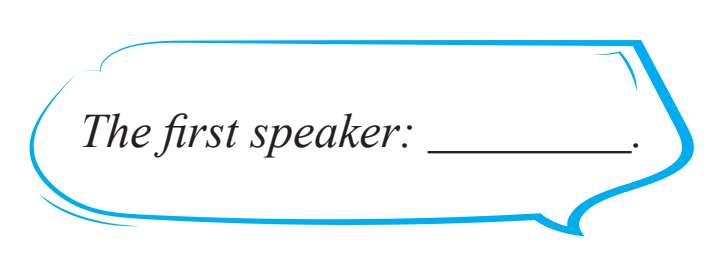
Debate Teams
Most of the formats share some general features in terms of participants. Specifically,any debate will have debate teams which form two sides: a proposition side, and an opposition side. The proposition (PRO), or government or affirmative, will propose a change in the status quo, whereas the opposition (OPP), or negative, is defending it. That is, the job of the proposition side is to advocate the adoption of the resolution, while the job of the opposition side is to refute the resolution.
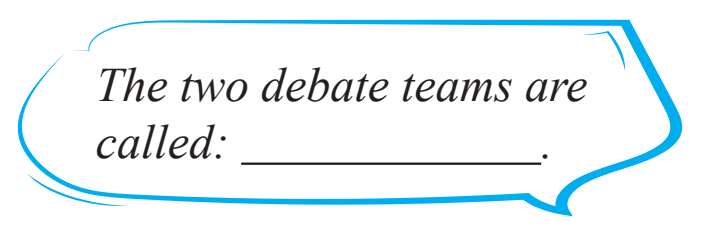
The resolution can take many forms, depending on the format. But in most cases, the resolution is simply a statement of policy or a statement of value. In many debate formats, there is a requirement that a policy resolution should represent a change from current policy, so that the opposition team will be defending the status quo.
In debate, each side is given a diferent burden as responsibility. Audience and judges evaluate debaters based on how well they fulfill their burdens. Failure to meet the expectations of the burdens can result in losing the debate. Debaters share three types of burdens:
The burden of proof: The saying debaters use for this burden is,“Those who assert must prove.”Whoever wants to make a point (an assertion) must provide reasons and proof that their point is right. Points, or assertions, are significant, outstanding, or efective ideas, arguments, or suggestions that make up your case. Since most debaters are not experts about the topic they are discussing, they must use sources of evidence that provide valid reasons for the audience to believe the position they are asserting. When a debater asserts a point without providing evidence, the other side may state the opposite (known as a counterpoint) without evidence, and both sides will tie on that particular point. If neither side gives evidence, the point is not proved and is considered moot, or still up for debate.

The burden of refutation: Refutation is the process of attacking and defending arguments. For this type of burden, you could say, “Silence is admission.” This means that if you present an argument in a debate and the other team doesn’t address it,you win that point automatically, since by their silence the other side has admitted that you are right. The other team is not carrying out their role, which is to debate your arguments. You win the argument because the other team failed its burden of refutation.
When you choose to answer each point or argument the other team presents, you are using line-by-line refutation, because you are following your opponent’s organization line by line in your notes and explaining to the judge why each point is wrong (each line in your notes would be another argument). You may also answer several of the other team’s arguments with only one or a few responses. This type of refutation is called grouping,because you take several lines of argument in your notes and group them together for your answers.
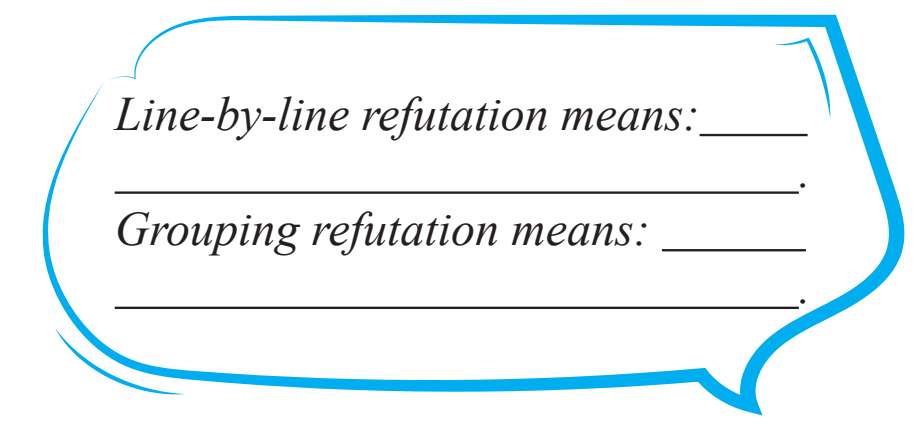
The burden of rejoinder: The saying for this burden is, “Answer the answer.” A good debate is like a good table tennis match: When one team hits the ball, the other team returns it. When the other team refutes what you say, you then have the burden of refuting the other team’s refutation. You have the responsibility to prove that the other team’s response is weak and your argument is stronger.
Judges
There are a minimum of three, and always an uneven number of impartial judges or adjudicators in a debate. They watch the debate and have to assess to what extent the teams performed their respective roles as either proposition (PRO) or opposition (OPP) in terms of style, content and strategy, whether the timing was alright and whether enough Points of Information (POIs) have been exchanged, etc.
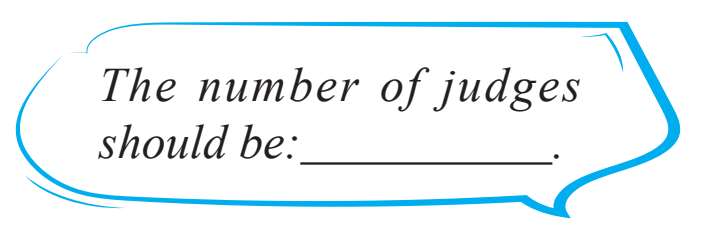
The chief adjudicator or chair announces the result of the debate. It can be either a unanimous (3-0) or a split decision (2-1). The judge not voting in favor of the winning team is called the dissenting judge. If the chief adjudicator is the dissenting judge, he can choose to delegate the adjudication speech to one of the other two.
There are diferent formats of debate used around the world, but most of these formats share some essential features such as the debate elements (motion, argumentation, and refutation) and the two sides: a proposition side who will advocate the adoption of a resolution and an opposition side who will refute the resolution.
The differences are mainly found in the number of debaters, length of the speech,cross-examination periods, order and length of the interventions and rebuttal, role of each debater, technical terms, and adjudication. Some formats were developed for use in secondary school or university programmes while other formats are used for public debates or exclusively used for policy motions. Major debate formats include British Parliamentary Debate, American Parliamentary Debate, the Lincoln-Douglas Debate,Policy Debate, the Oxford Style Debate, Harvard Debate, Karl Popper Debate, etc.
1) British Parliamentary Debate
British Parliamentary Debate (BP Debate) is a major form of academic debate that originated in Liverpool in the mid-1800s. It is the official style of the World Universities Debating Championship (WUDC) and the European Universities Debating Championship. The debate consists of four teams of two speakers, called factions , with two teams on either side of the case.
Because the style is originated in British Parliamentary procedures, the two sides are called the proposition (government) and opposition, while the speakers take their titles from those of their parliamentary equivalent. Furthermore, since this style is based on parliamentary debate, each faction is considered to be one of two parties in a coalition.They must therefore diferentiate themselves from the other team on their side of the case in order to succeed in their own right.
Parliamentary debate formats stress improvisation and persuasion . The proposition being debated is not given to the teams until 10 or 15 minutes before the debate begins, meaning that the teams do not have a chance to perform in-depth research. A parliamentary debate alternates between four constructive speeches followed by two shorter rebuttals . No cross-examination is used in parliamentary debates, but a team may interrupt an opposing team by calling for either a point of information (POI),asking for clarification on an argument, or a point of order (POD), to observe that a rule of the debate has been broken.
All speakers are expected to offer POIs to their opponents. POIs are particularly important in British Parliamentary Debate style, as it allows the first two teams to maintain their relevance during the course of the debate, and the last two teams to introduce their arguments early in the debate. At the end of the debate, the teams are ranked from one through four.
Structure of British Parliamentary Debate

Speaking Order and Time Limits
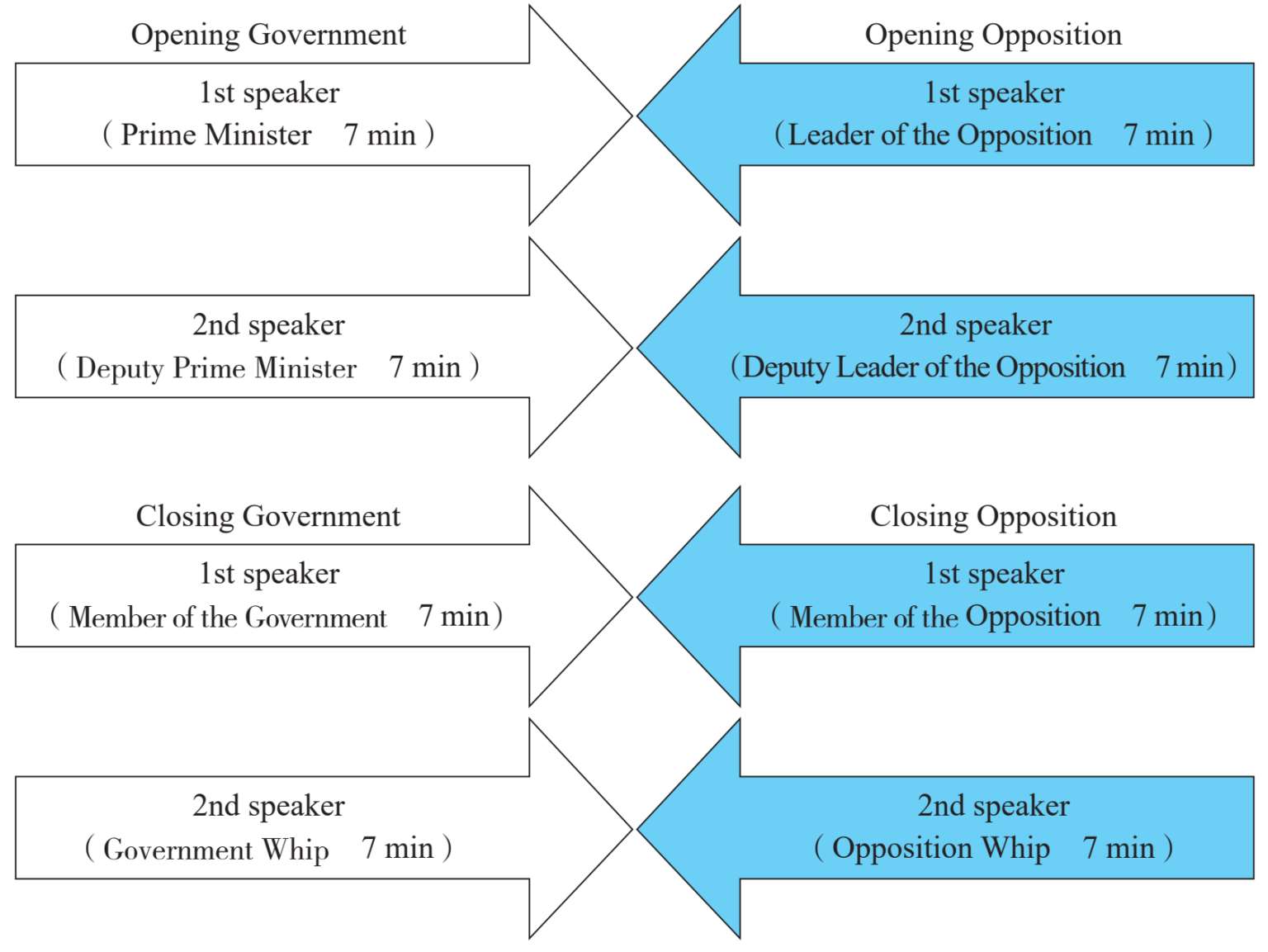
After-reading Activity
● Consult a dictionary for the accurate understanding of the key words in bold in the text.
● Watch the vedio “A Brief Introduction to British Parliamentary Debate” to get more information.
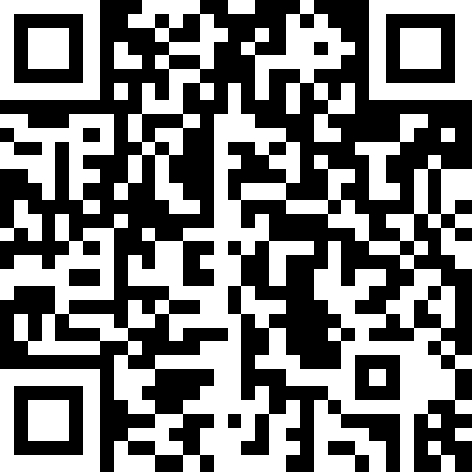
2) American Parliamentary Debate
American Parliamentary Debate (AP Debate) has its roots in British Parliamentary Debate, which is modeled loosely on the procedure and decorum of the UK parliament. This style emphasizes arguments and rhetoric, rather than research and detailed factual knowledge.
American Parliamentary Debate consists of a two-on-two debate, between the affirmative team, known as the government or the proposition, and the negative team, referred to as the opposition. Debater role names are borrowed from the British Parliament, with the judge being referred to as the speaker. Most variations of the style do not include a specialized cross-examination period, but allow debaters to make parliamentary points.
● Points of Information (POIs) are questions or statements the opposing side can direct the speaker who has the floor. The speaker has an option to recognize or decline a POI. In most styles POIs cannot be made during the first and last minute of each speech (known as protected time) or during rebuttals.
● Points of Order (PODs) are made when the speaker is introducing a new argument during a rebuttal speech, or grossly mischaracterizing arguments. During a POD,oficial time (usually kept by the judge) is to be stopped while the judge listens and considers the point raised.
● Points of Personal Privilege (PPPs) are made when the speaker makes offensive claims or personal attacks.
The key feature uniting various formats of parliamentary debate in the US is their spontaneity. The resolutions alternate each round. The second key feature is a ban on quoted evidence. Debaters may not bring in any material that was not prepared in the 20 minutes of preparation time and consult it during the round.
Structure of American Parliamentary Debate

Speaking Order and Time Limits

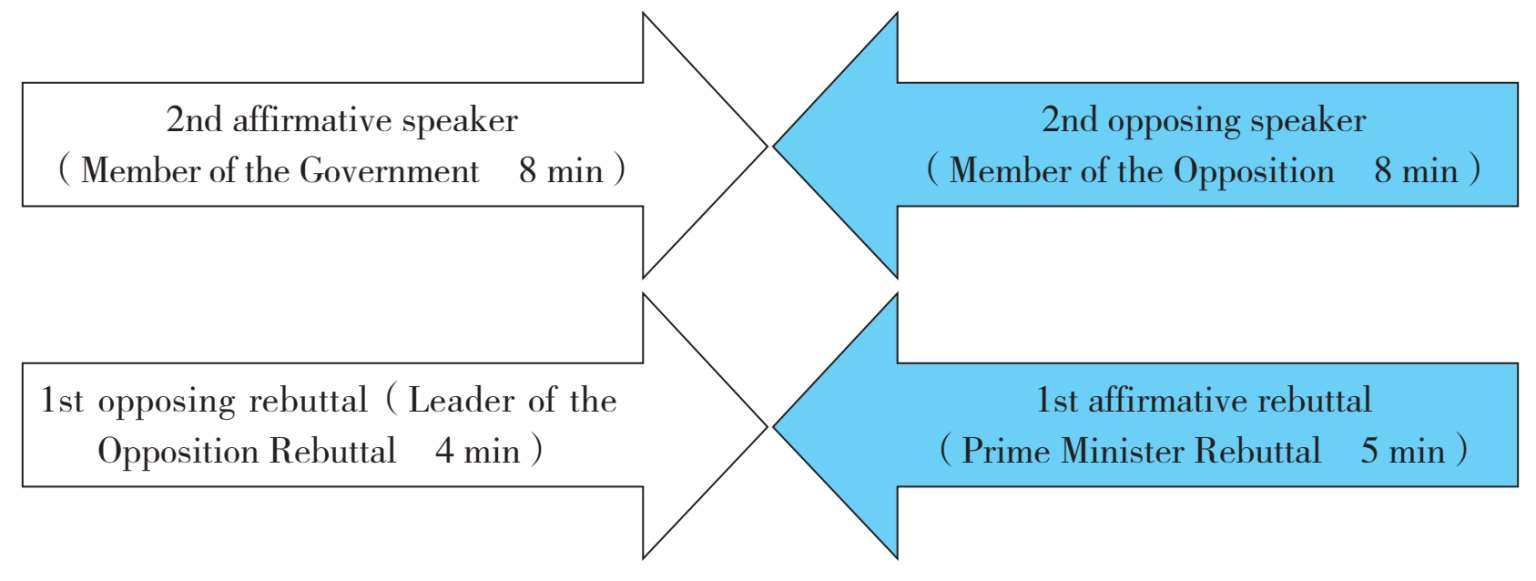
After-reading Activity
● Work in groups to discuss the diferences between BP Debate and AP Debate.